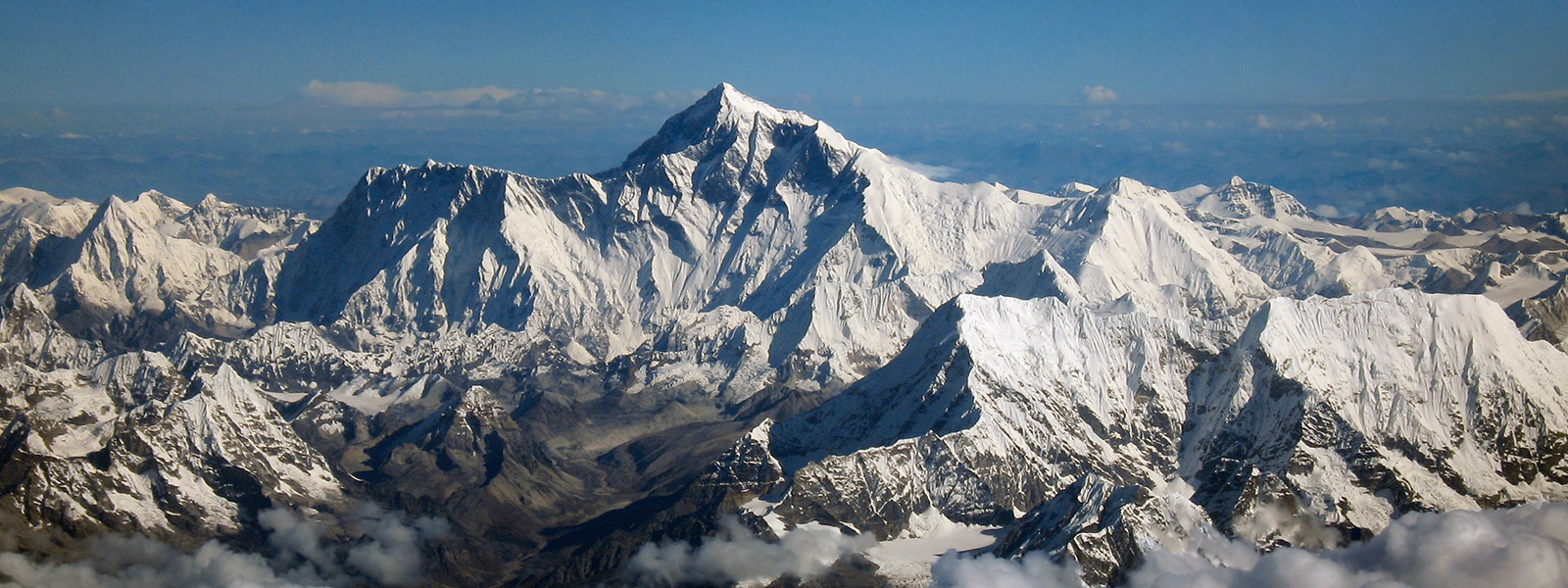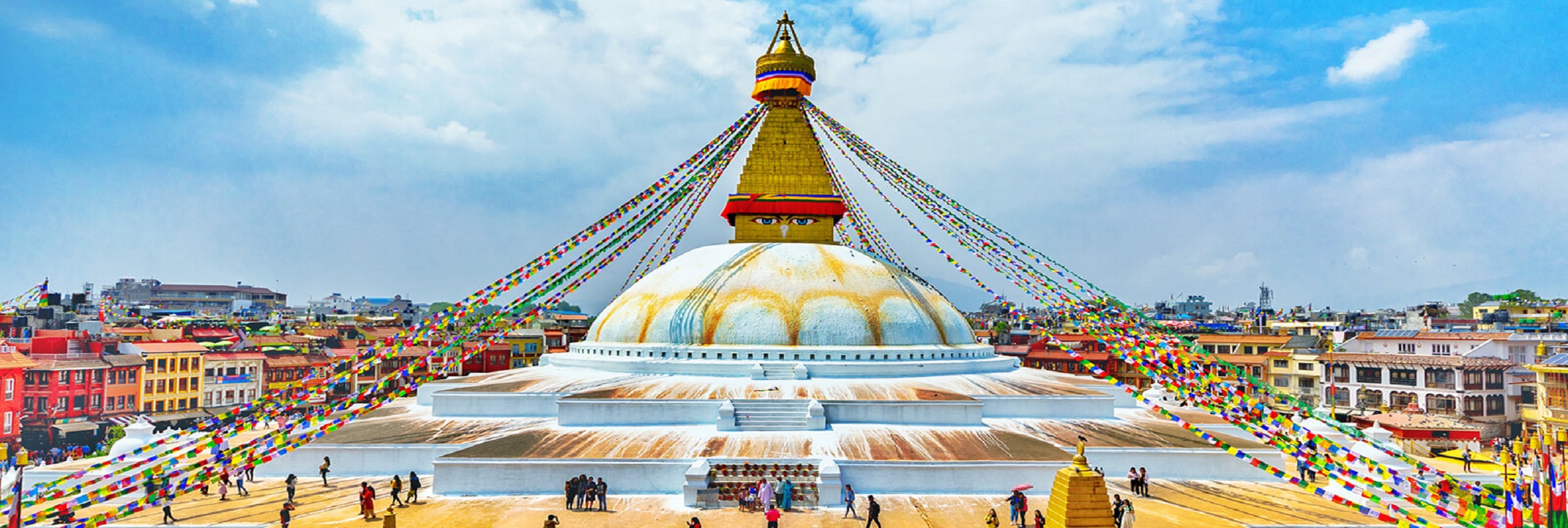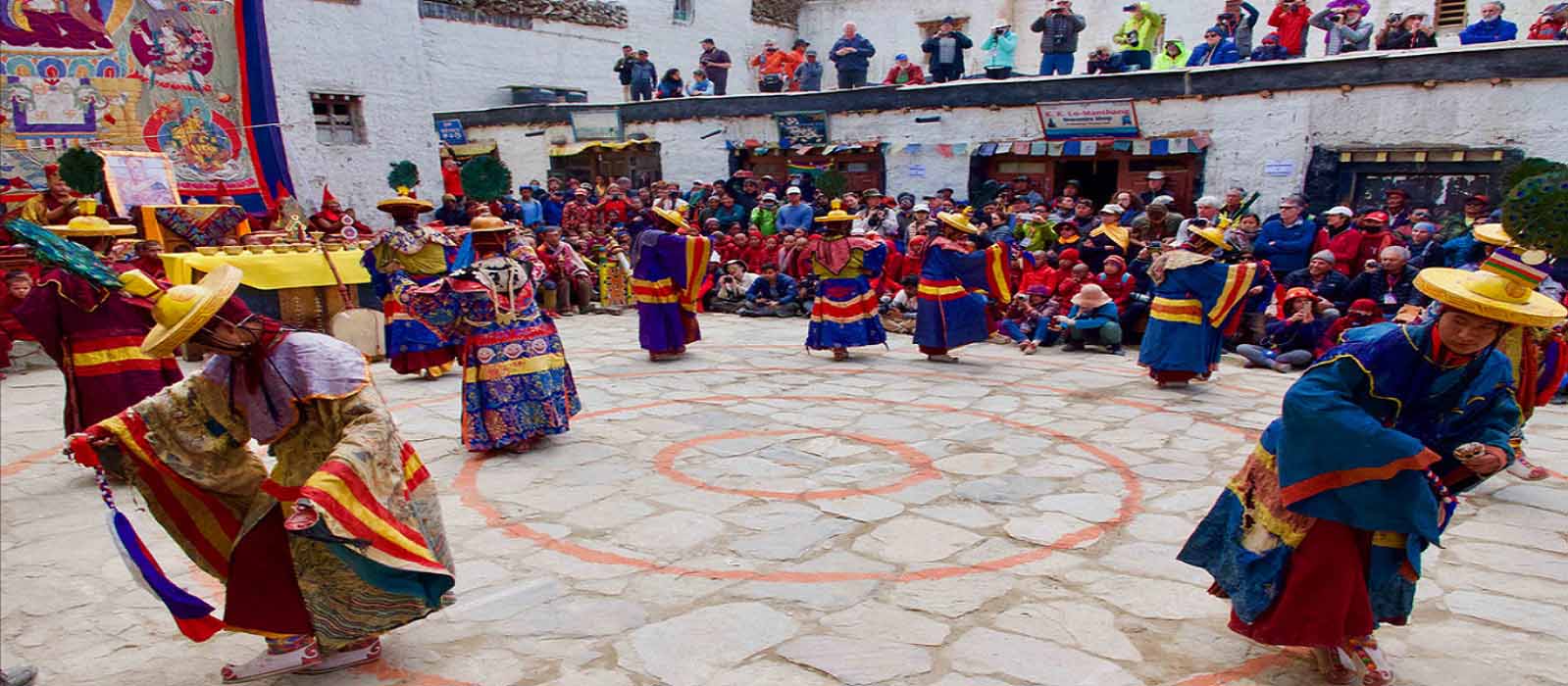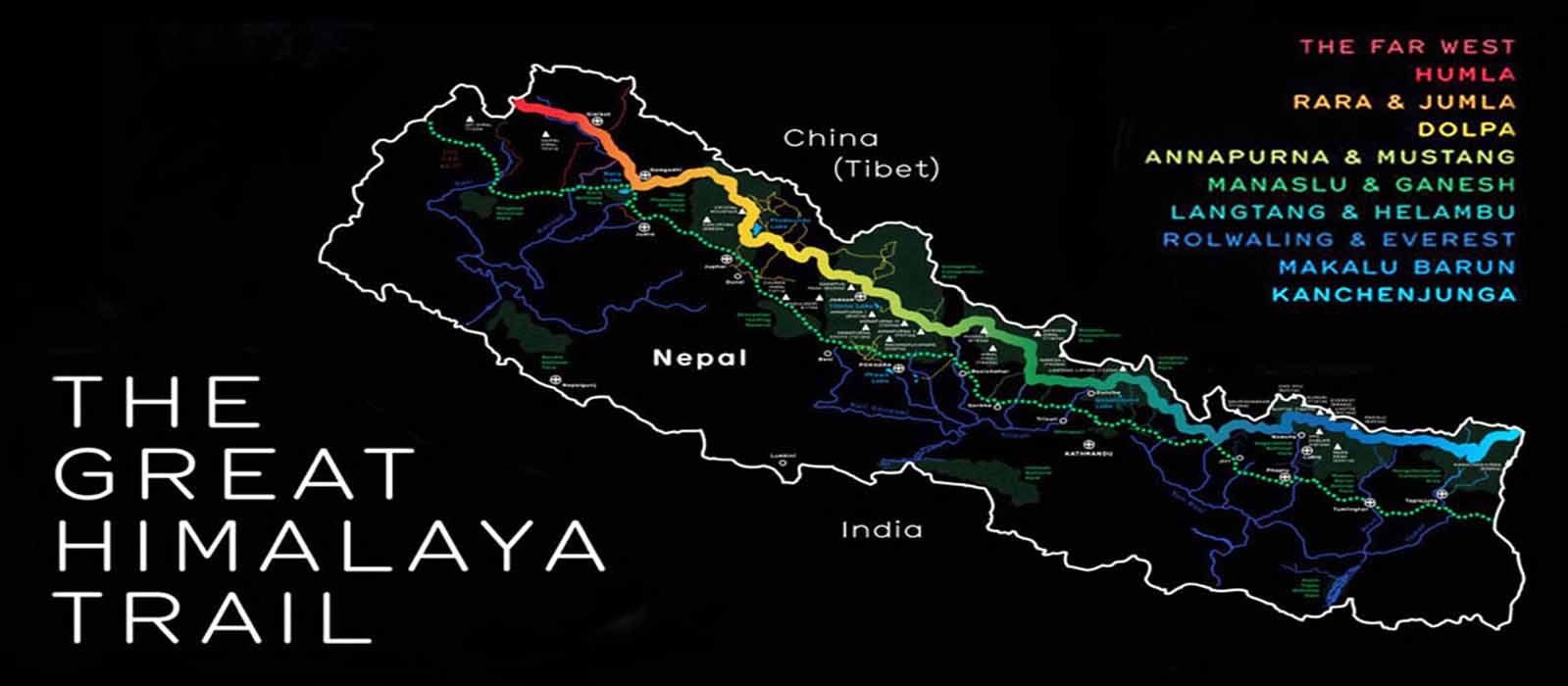call us on Viber/whatsapp
+977-9851133894NEPAL-THE HIMALAYAS

Nepal is best-known for the Himalayas, Mount Everest, and it's amazing treks. Eight of the world’s 14 eight thousand meter peaks are located in Nepal, creating world-class mountaineering and trekking opportunities. But Nepal has much more to offer than just its mountains. Its capital, Kathmandu, is a bustling city with seven UNESCO World Heritage sites including Boudhanath, the world largest Buddhist stupa. The Nepalese lowlands in the south are subtropical and are home to tigers, elephants, and rhinos. The people of Nepal are among the warmest and most welcoming in the world.

Nepal is a pilgrimage for every mountain-lover must make, and a destination our travellers return to time and time again. It is a fascinating country best explored on foot, which is why we have so many walking and trekking holidays in Nepal on offer. If you've not been to Nepal before, take a read of our Nepal first timer's guide. This tiny Himalayan country packs a mighty punch, home to 8 of the world's 8000m peaks and of course, Earth’s highest mountain, Everest. For first timer’s, it’s all about immersing yourself by walking in the Everest and Annapurna regions, following winding mountain trails draped with lines of ubiquitous prayer flags and encountering the welcoming, indomitable spirit of the sherpas and local people. Whatever your level of fitness and experience we will have the right paced itinerary for you - simply check out our Nepal grade guide.
When, like most who have been, you’re inspired into making a return visit, there’s always more to be discovered, from the authentic experience of trekking in regions still little-visited by Western travellers to exploring remote areas such as trekking in the Ganesh Himal or Shey Gompa – also known as the land of the snow leopard. Wherever you choose to adventure in Nepal, we can guarantee you one thing: it’ll be everything you’ve ever dreamt
Area: 147,181 sq. KM
Geography: Situated in between China in the north and India in the south, with three major regions – the Himalayan belt in the north, the Hilly region and fertile valleys in the middle and the narrow strip of plain Terai in the South. Nepal is home to 8 of the 10 highest peaks (above 8000m+) in the world including the highest, Mt. Everest and the Kali Gandaki River Gorge, the deepest river gorge in the world.
Nepal is a landlocked country located in South Asia with China in the north and India in the south, east and west. The country occupies 147,516 sq. km of land and lies between coordinates approximately 28°N and 84°E. Nepal falls in the temperate zone north of the Tropic of Cancer. The entire distance from east to west is about 800 km while from north to south is only 150 to 250 km. Nepal has vast water systems which drain south into India. The country can be divided into three main geographical regions: Himalayan region, mid hill region and the Tarai region. The highest point in the country is Mt. Everest (8,848 m) while the lowest point is in the Tarai plains of Kechana Kalan in Jhapa (60 m).
The Tarai region has a width ranging from 26km to 32 km and varies in altitude from 60m to 305 m. It occupies about 17 percent of total land area of the country. Further north, the Siwalik zone (700 – 1,500 m) and the Mahabharat range (1,500m - 2,700m) give way to the Duns (valleys), such as Trijuga, Sindhuli, Chitwan, Dang and Surkhet. The Midlands (600 – 3,500 m), north of the Mahabharat range is where the two beautiful valleys of Kathmandu and Pokhara lie.
The mountainous region begins at 3000m leading up to the alpine pastures and temperate forests limited by the tree-line at 4,000 m and the snow line beginning at 5000 m. Eight of the world’s highest peaks (out of fourteen) that are above 8000m lie in Nepal: Mount Everest (8,848 m), Kanchenjunga (8,586 m), Lhotse (8,516 m), Makalu (8,463 m), Cho Oyu (8,201m), Dhaulagiri (8,167 m), Manaslu (8,163 m) and Annapurna (8,091 m). The inner Himalayan valley (above 3,600 m) such as Mustang and Dolpo are cold deserts sharing topographical characteristics with the Tibetan plateau. Nepal holds the so called “waters towers of South Asia” with its 6,000 rivers which are either snow-fed or dependent on rain. The perennial rivers include Mahakali, Karnali, Narayani and Koshi rivers originating in the Himalayas. Medium-sized rivers like Babai, West Rapti, Bagmati, Kamla, Kankai and Mechi originate in the Midlands and Mahabharat range.
Of the163 wetlands documented, the nine globally recognized Ramsar Sites are: Koshi Tappu Wildlife Reserve, Beeshazarital (Chitwan), Jagdishpur Reservoir (Kapilvastu) Ghodaghodi Tal (Kailali) in the Tarai, and Gokyo (Solukhumbu), Phoksundo (Dolpa), Rara (Mugu) and Mai Pokhari (Ilam) in the mountainous region. There are more than 30 natural caves in the country out of which only a few are accessible by road. Maratika Cave (also known as Haleshi) is a pilgrimage site associated with both Buddhism and Hinduism. Siddha Cave is below BNDIPUR near Bimal Nagar along the Kathmandu-Pokhara highway. Pokhara is also known for caves namely Bats’ shed (Mahendra Gufa), Batulechar, Gupteswar, Patale Chhango. The numerous caves around Lo Manthang in Mustang include Luri and Tashi Kabum which house ancient murals and chortens dating back to the 13th century.

Capital: Kathmandu, a historical city with rich cultural heritage.
Population: 27 million (estimate)
Language: Nepali is the official language as well as the main language of communication. Moreover, there are 123 distinct languages are spoken in Nepal. English is widely spoken in the capital, other urban centers and tourist areas.
Currency: Nepalese Rupee
Political system: The politics of Nepal function within a framework of a 'Federal Democratic Republic of Nepal' with a multi-party system, 7 provinces, 77 districts & 753 local levels (including 6 metropolises, 11 sub- metropolises, 276 municipalities, and 460 rural municipalities).
Religion: Nepal is a multi-religious country, and it home to different religious followers. Until 2006 it was Hindu Kingdom, but then after it was declared as a secular state. The 2011 census reported that the religion with the largest number of followers in Nepal was Hinduism (81.3% of the population), followed by Buddhism (9%); the remaining were Islam (4.4%), Kirant (3.1%), Christianity (1.4%) and Prakriti or nature worship (0.5%).

People: Nepal has more to 125 ethnic groups.
Nepal Standard Time: 5:45 ahead of GMT
Flag: Nepal boasts the only non-rectangular flag in the world.
Climate: Nepal has five climatic zones, broadly corresponding to the altitudes. The tropical and subtropical zones lie below 1,200 metres (3,900 ft), the temperate zone 1,200 to 2,400 metres (3,900 to 7,900 ft), the cold zone 2,400 to 3,600 metres (7,900 to 11,800 ft), the subarctic zone 3,600 to 4,400 metres (11,800 to 14,400 ft), and the Arctic zone above 4,400 metres (14,400 ft). Nepal experiences five seasons: summer, monsoon, autumn, winter and spring.
Infrastructure: Nepal currently has only one international airport, Tribhuvan International Airport in Kathmandu and 44 domestic airports. A second international airport in Pokhara is currently under construction. There are 15,458km of roads with four main highways: The Mahendra Highway connecting the east to the west; The Prithvi Highway connecting to the south and west; The Arniko Highway to the northeast and the Tribhuvan Raj Path connecting to the south.
Some facts of Nepal
The national greeting is ‘Namaste’ which means ‘I celebrate the divinity in you’.
Sons are expected to care for their mothers in old age. There is high respect for elders in general.
The Kumari Devi is revered by both Hindus and Buddhists in Nepal as a ‘living Goddess’.
Nepal is said to be the home of the Yeti – an abominable/ monstrous snowman with large, hairy creature that lives high in the Himalayan Mountains.
Nepal is home to 8 out of 14 8,000m peaks, including Mount Everest, the highest mountain in the world at 8,848m.
Nepal is one habitat of endangered species 'One horned Rhinoceros".
Nepal is a paradise for bird watchers with more than 450 species of birds
The Chitwan National Park, a wildlife museum and one of the best National Parks in Asia.
Nepal is the birthplace of Lord Buddha.
The longest trekking trail GHT -"Great Himalayan Trail".

GHT(Great Himalayan Trail) Map